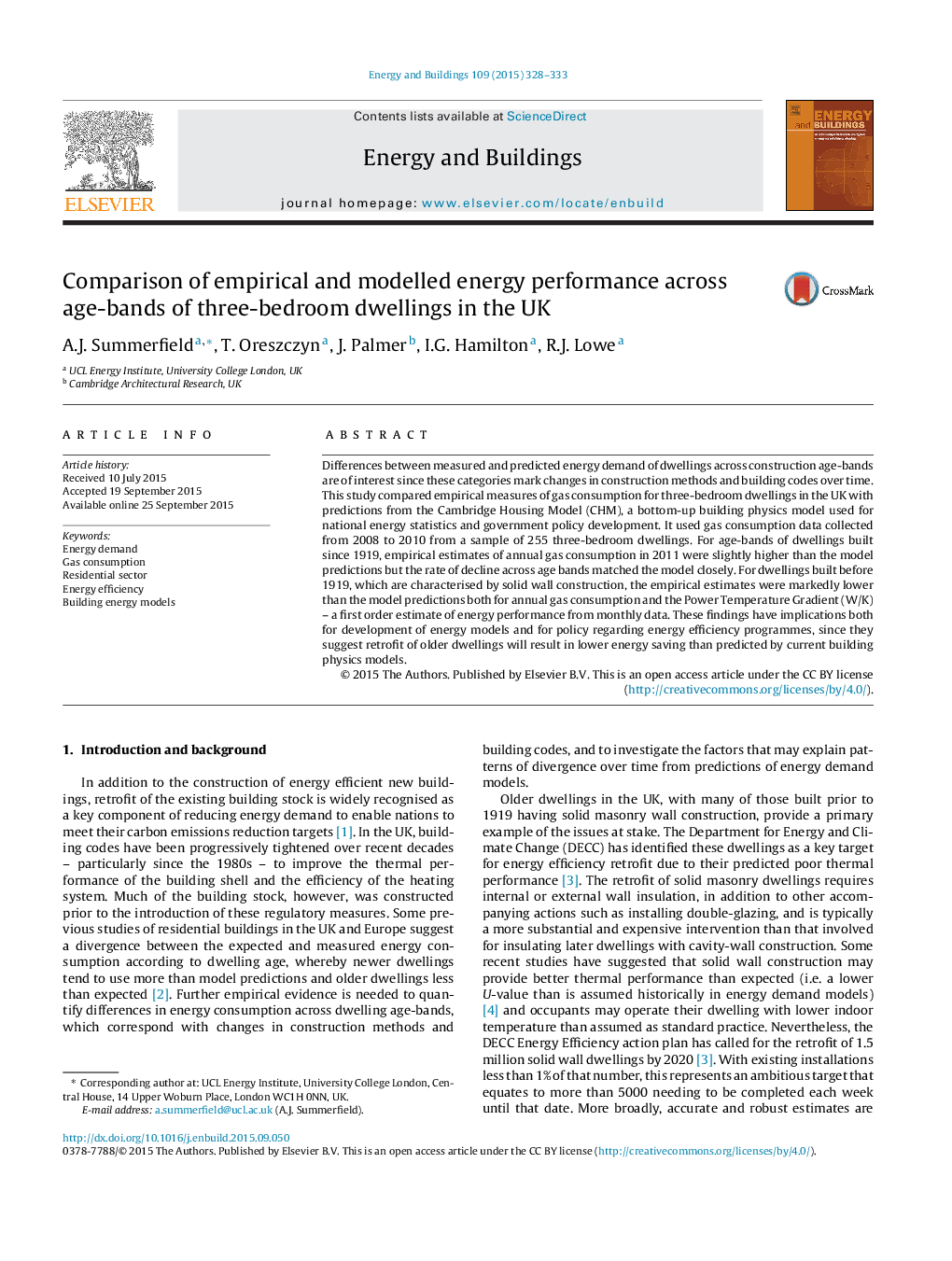| Article ID | Journal | Published Year | Pages | File Type |
|---|---|---|---|---|
| 6731046 | Energy and Buildings | 2015 | 6 Pages |
Abstract
Differences between measured and predicted energy demand of dwellings across construction age-bands are of interest since these categories mark changes in construction methods and building codes over time. This study compared empirical measures of gas consumption for three-bedroom dwellings in the UK with predictions from the Cambridge Housing Model (CHM), a bottom-up building physics model used for national energy statistics and government policy development. It used gas consumption data collected from 2008 to 2010 from a sample of 255 three-bedroom dwellings. For age-bands of dwellings built since 1919, empirical estimates of annual gas consumption in 2011 were slightly higher than the model predictions but the rate of decline across age bands matched the model closely. For dwellings built before 1919, which are characterised by solid wall construction, the empirical estimates were markedly lower than the model predictions both for annual gas consumption and the Power Temperature Gradient (W/K) - a first order estimate of energy performance from monthly data. These findings have implications both for development of energy models and for policy regarding energy efficiency programmes, since they suggest retrofit of older dwellings will result in lower energy saving than predicted by current building physics models.
Related Topics
Physical Sciences and Engineering
Energy
Renewable Energy, Sustainability and the Environment
Authors
A.J. Summerfield, T. Oreszczyn, J. Palmer, I.G. Hamilton, R.J. Lowe,
